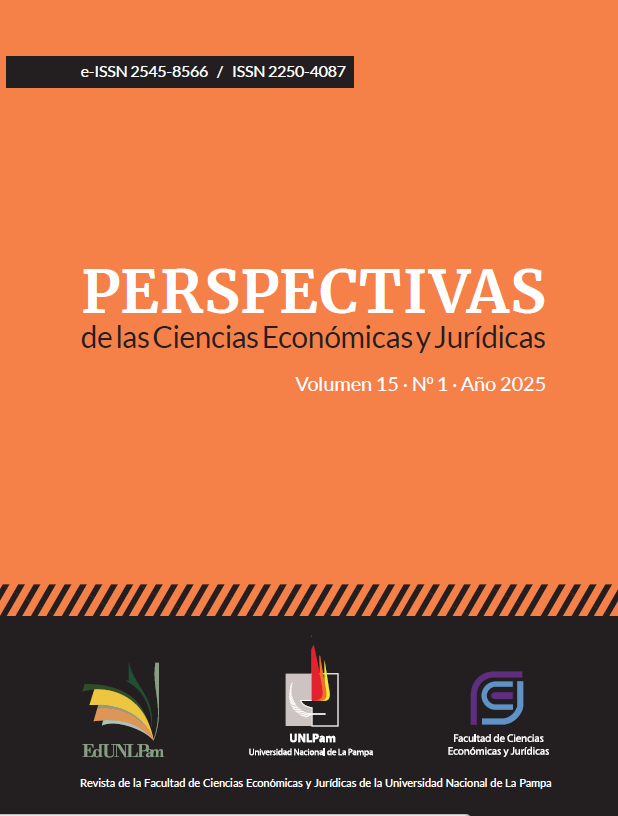Justice 4.0. What if justice were automated and controlledby algorithms?
DOI:
https://doi.org/10.19137/perspectivas-2025-v15n1a05Keywords:
justice, artificial intelligence, algorithmAbstract
In a context of disruptive changes, it is said that we live in a kind of attention economy, a new and different business model, characterized by a concept where attention is valuable, because it means money, since it translates directly into an economy of time. Thus, companies, under the pretext of free use, “privacy” and “security”, often biased and illegal, capture personal data of users, either through social networks, videos, applications, games, thereby making a study-analysis of their profiles and using these to offer products and / or personalized services. Thus, the multiple applications derive in multiple distractions, which often become a prison without bars, because they make us unconscious/vulnerable, depriving us of the freedom to think autonomously, transforming us into consumer robots. This, without counting the direct violations of privacy through data manipulation. And all this for money in exchange for attention. Is this fair or not?
Downloads
References
Aibar, E. (1996). La vida social de las máquinas: orígenes, desarrollo y perspectivas actuales en la sociología de la tecnología. REIS, 141-170.
Artificial Intelligence and the Legal Profession. (2018). In Horizon Scanning; Forward Thinking (03/05/2018 ed.). The Law Society of England and Wales: The Law Society of England and Wales.
Cabrera, R. F. (2018). Inteligencia artificial y su impacto en la justicia. Informática y Derecho: Revista Iberoamericana de Derecho Informático (segunda época)(5), 85-94.
Dabass, J., & Dabass, B. S. (2018). Scope of Artificial Intelligence in Law. Preprints. https://doi.org/https://doi.org/10.20944/preprints201806.0474.v1
Engle, E. A. (2004). An Introduction to Artificial Intelligence and Legal Reasoning: Using xTalk to Model the Alien Tort Claims Act and Torture Victim Protection Act. Rich. JL & Tech., 11, 53.
Fernández, L. E. Í. (2012). Breve historia de la Revolución Industrial. Nowtilus.
García, L. S. (2018). Las invenciones generadas por inteligencia artificial y sus implicaciones para el derecho de patentes. Informática y Derecho: Revista Iberoamericana de Derecho Informático (segunda época)(5), 49-84.
Garrell, A., & Guilera, L. (2019). La industria 4.0 en la sociedad digital. Marge books.
Granero, H. R. (2018). La inteligencia artificial aplicada al derecho-el cumplimiento del sueño de Hammurabi. Informática y Derecho: Revista Iberoamericana de Derecho Informático (segunda época)(5), 119-133.
Iracelay, J. J. V. (2018). Inteligencia artificial y derecho: principios y propuestas para una gobernanza eficaz. Informática y Derecho: Revista Iberoamericana de Derecho Informático (Segunda época)(5), 13-48.
Kingston, J. K. C. (2016, 2016). Artificial Intelligence and Legal Liability. Research and Development in Intelligent Systems XXXIII, Cham.
Krausová, A. (2017). Intersections Between Law and Artificial Intelligence. International Journal of Computer (IJC), 27(1), 55-68.
Lafferrière, J. N. (2017). ¿Los seres humanos somos meros "algoritmos"?: una reflexión crítica sobre el libro Homo Deus. Breve historia del mañana.
Marchant, G. E. (2017). Artificial intelligence and the future of legal practice. ABA SciTech Law, 14(1).
McJohn, S. M. (1998). Review of 'Artificial Legal Intelligence'. Harvard Journal of Law & Technology, 12, 241.
Pollo-Cattáneo, M. F. (2018). Resolviendo problemas en los sistemas de información. Buenos Aires, Editorial CEIT.
Schweisfurth, T., & Goduscheit, R. C. (2020). Por qué la creatividad es el campo de batalla definitivo entre la inteligencia artificial y la humana. BBC News Mundo.
Verheij, B. (2016). Formalizing value-guided argumentation for ethical systems design. Artificial Intelligence and Law, 24(4), 387-407. https://doi.org/10.1007/s10506-016-9189-y
Downloads
Published
Issue
Section
License
Aquellos autores/as que tengan publicaciones con esta revista, aceptan los términos siguientes:- Los autores/as conservarán sus derechos de autor y garantizarán a la revista el derecho de primera publicación de su obra, el cuál estará simultáneamente sujeto a la Licencia de reconocimiento de Creative Commons que permite a terceros compartir la obra siempre que se indique su autor y su primera publicación esta revista.
- Los autores/as podrán adoptar otros acuerdos de licencia no exclusiva de distribución de la versión de la obra publicada (p. ej.: depositarla en un archivo telemático institucional o publicarla en un volumen monográfico) siempre que se indique la publicación inicial en esta revista.
- Se permite y recomienda a los autores/as difundir su obra a través de Internet (p. ej.: en archivos telemáticos institucionales o en su página web) antes y durante el proceso de envío, lo cual puede producir intercambios interesantes y aumentar las citas de la obra publicada. (Véase El efecto del acceso abierto).











.png)



5.jpg)












